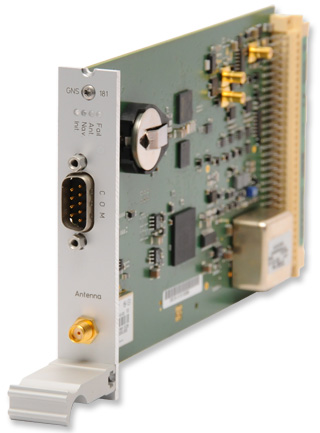News from 2016-10-27
Multi GNSS support for IMS and LANTIME M-Series: GPS, Galileo, GLONASS and Beidou

The GNS clock module can be configured to select up to three different GNSS constellations to be used in parallel, supporting GPS, GLONASS, Beidou and Galileo as well as combinations of these four satellite systems.
It is fully compatible with Meinberg's Intelligent Modular Synchronization (IMS) product family. That means, the IMS-GNS181 clock module can be installed in any CLK slot of all IMS systems, including all LANTIME M500, M1000, M3000 and M4000 models. Users can easily add the GNS181 as a second, redundant clock module to their already deployed IMS systems or field-replace their current IMS clock modules with the new Multi-GNSS capable board.

In addition to the IMS series, the LANTIME M-Series products such as the LANTIME M300 and LANTIME M600 models can be already ordered with the new receiver board. Other Meinberg products will eventually be available with a GNS receiver, including a PCIe card.
The Meinberg GNS receiver requires an antenna which has to be capable of receiving the desired GNSS signals. The Meinberg GPS/GLONASS antenna is already Multi-GNSS capable and therefore can be used for all GNS-supported GNSS signals.
As of today, the Galileo constellation is still lacking a few satellites but ESA is busy preparing the next launch on November 17, Flight Number VA233. For the first time, the Ariane 5 launcher will be carrying a total of four Galileo satellites instead of two, bringing the total constellation to 18 SV's ("Space Vehicle"). Although two satellites (SV ID12 and 20) are marked as "Not available" until further notice (since 2014), Initial Operational Capability (IOC) status can be reached until the end of this year. See the ESA website covering the Galileo launch for further details.
The current status of the constellation can be checked on the Constellation Information page of the European GNSS Service Centre website.

